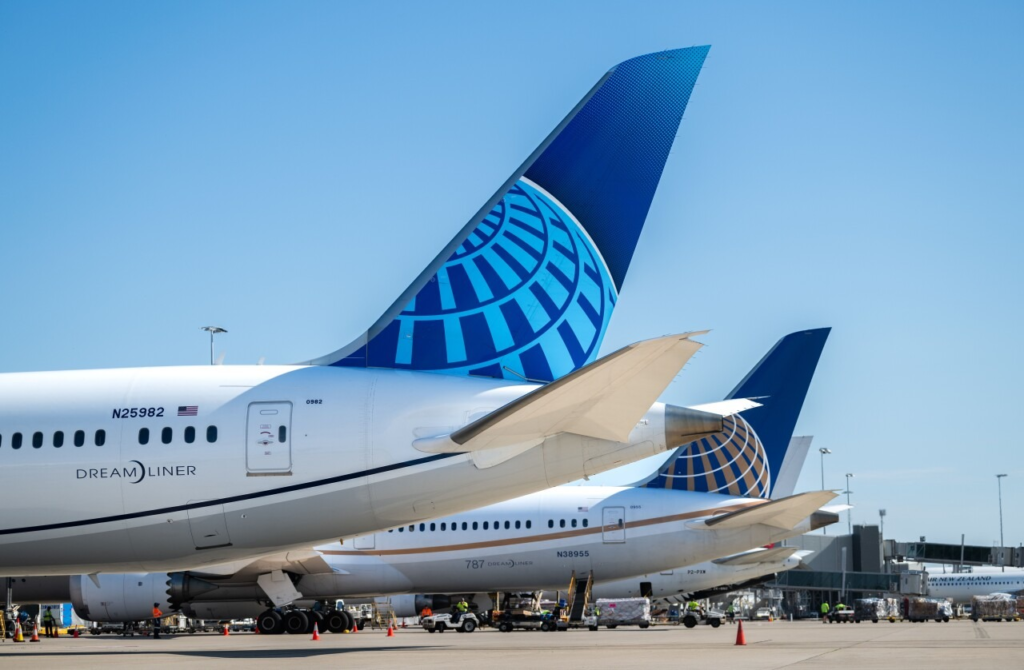CHICAGO- United Airlines (UA) CEO Scott Kirby has shifted his approach to airline management, prioritizing customer experience over strict cost control and the airline is performing well under his leadership.
This transformation marks a departure from his previous roles at US Airways and American Airlines (AA), where he was known for his spreadsheet-focused approach.

United CEO Scott Kirby Regime
During United’s third-quarter earnings call, Kirby attributed the airline’s strong financial performance to improved customer experience and significant product investments. This stance contrasts sharply with his past decisions, such as charging for water and eliminating elite bonus miles at US Airways.
Kirby’s evolution is evident in United’s strategic decisions. The airline now makes investments in customer experience that competitors aren’t matching, taking risks with potentially less quantifiable payoffs. This approach appears to be yielding positive results for United.
The CEO’s perspective on route expansion also reflects this shift. Kirby described the plan to fly to Nuuk, Greenland as low-risk but with significant potential for enhancing United’s brand, customer profile, and MileagePlus program sign-ups.
This transformation in Kirby’s management style challenges the conventional wisdom that past behavior best predicts future actions. It also highlights the potential for executive growth and adaptation in response to changing market dynamics and company needs, says Gary Leff of View from the Wing.

Right Leader for United
Scott Kirby pioneered the elimination of most change fees among legacy carriers and advocated for seatback entertainment screens, contrary to initial skepticism.
His explanation that the CEO role offers a different perspective gains credibility as United’s performance improves.
United now boasts a competitive business-class product, improved lounges, and the industry’s best mobile app. The ConnectionSaver technology, unique to United, helps reduce passenger stranding. Despite uncomfortable coach seats, the airline is installing seatback screens and planning to upgrade to Starlink for superior in-flight Wi-Fi.

MileagePlus, while experiencing a value decline, offers better business class availability to Europe through Star Alliance partnerships compared to other U.S. airline programs. Kirby recognized MileagePlus’s value to the network, using card revenue to justify domestic capacity growth and fleet upgrades.
This strategic shift contrasts sharply with United’s previous cost-cutting measures, such as the “Project Quality” initiative under Jeff Smisek, which reduced in-flight amenities like ketchup on European flights and garlic bread in Asian premium cabins, Say Gary.

Historic Q3 Results
United Airlines reports profitability across all hubs and regions, a rare achievement in the industry. MileagePlus revenue increased by 11%, membership grew 13%, and co-brand card spending rose 9% year-over-year.
Chief Commercial Officer (CCO) Andrew Nocella revealed that MileagePlus elite members drove the majority of United’s revenue growth, with a 9% increase in the third quarter.
United’s customer segmentation strategy shows success, with basic economy volumes up 21%. The airline deploys larger aircraft, increasing seat inventory without lowering fares for business and premium leisure travelers. Instead, United sells discounted fares to price-sensitive customers using its stringent basic economy product.
CFO Mike Leskinen contrasted United’s approach with Delta Air Lines’ (DL) recent performance, criticizing Delta’s explanations regarding CrowdStrike and weather-related issues.
Leskinen emphasized United’s strategy of incorporating potential disruptions into its guidance, allowing for more accurate forecasts and potential outperformance.
Scott Kirby reinforced this stance, citing his ‘No Excuses’ philosophy from his Air Force Academy days.

$1.5 Billion Stock Buybacks
United Airlines announced $1.5 billion in stock buybacks, signaling confidence in the company’s free cash flow generation. Management believes this strategy is advantageous, potentially retiring more shares at current prices.
The decision to return cash to shareholders demonstrates good stewardship of resources and may bolster investor trust. It also allows capital reallocation to more productive sectors of the economy. Contrary to some claims, buybacks represent a return of shareholder money, not corporate raiding.
Flight attendants union head Sara Nelson’s claim that the buyback money belongs to flight attendants is contested. United’s business forecasts already factor in higher flight attendant wages. The union only recently specified wage demands, following federal mediators’ insistence.
The AFA-CWA union’s strategy of prioritizing American Airlines negotiations over United’s contributed to delays in reaching a United contract. This approach aimed to establish a higher wage floor for United negotiations.
United plans $6.5 billion in capital expenditures this year and over $7 billion next year, with the $1.5 billion buyback spread over five quarters.
While the fleet plan and rising labor costs pose risks, and economic growth may not match United’s expansion plans, the airline demonstrates a clear strategy. This contrasts with some competitors’ less-defined approaches.
What are your thoughts on Scott Kirby as CEO of United? Is United doing well under his leadership? Let us know in the comments on our social media pages.
Stay tuned with us. Further, follow us on social media for the latest updates.
Join us on Telegram Group for the Latest Aviation Updates. Subsequently, follow us on Google News

